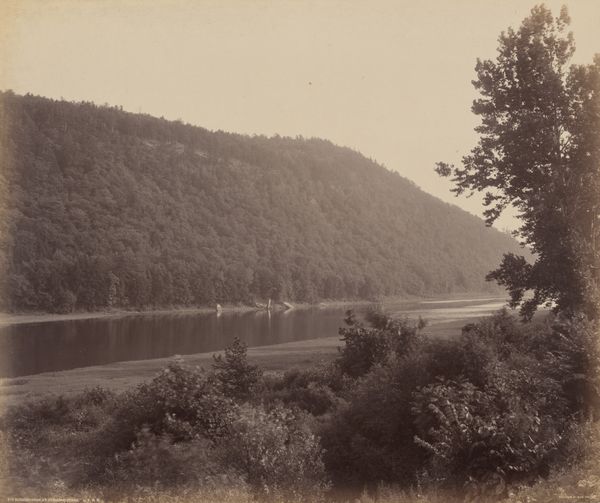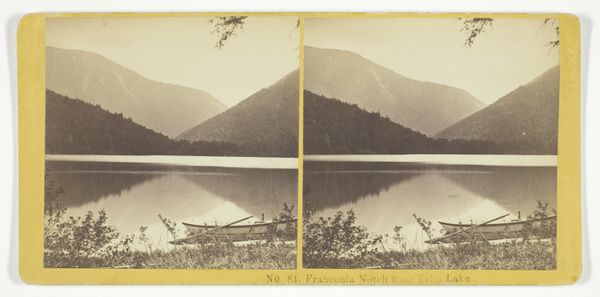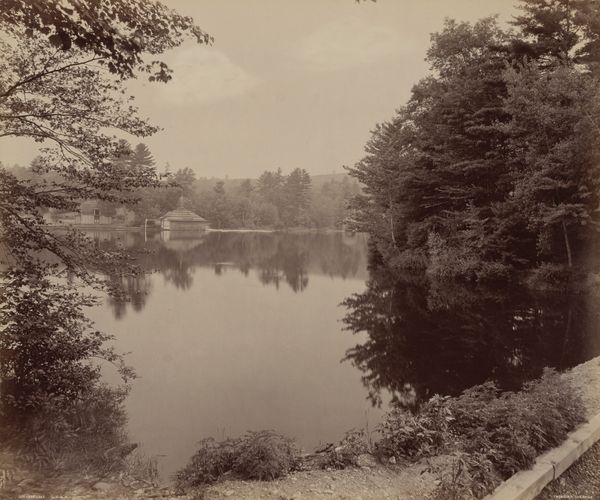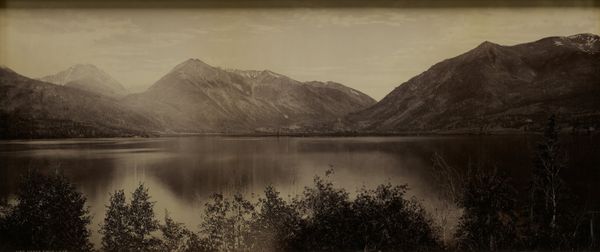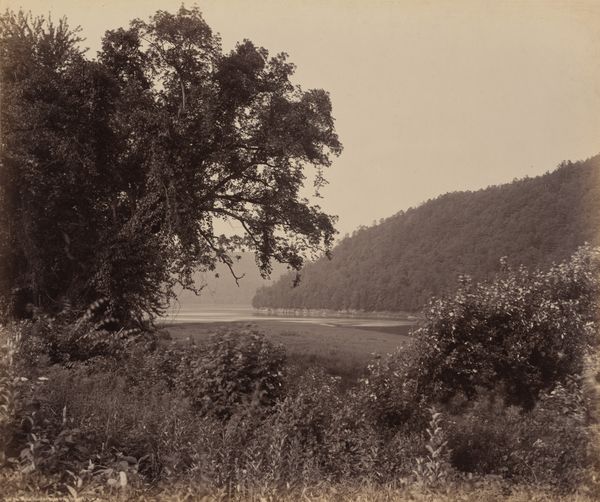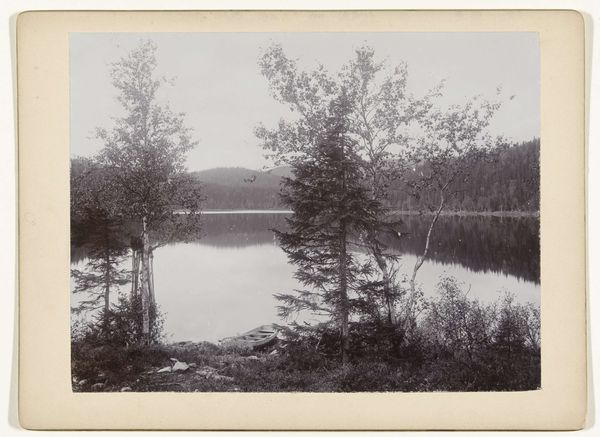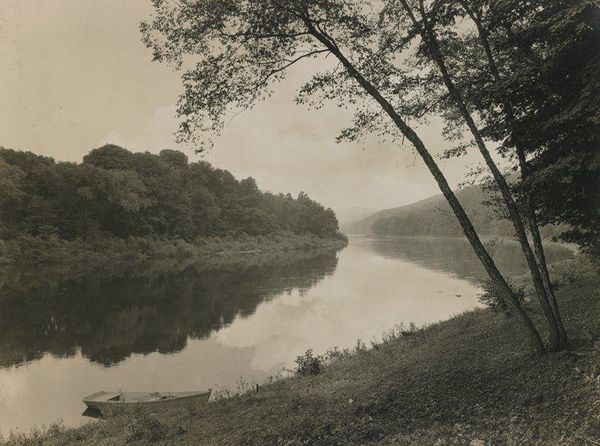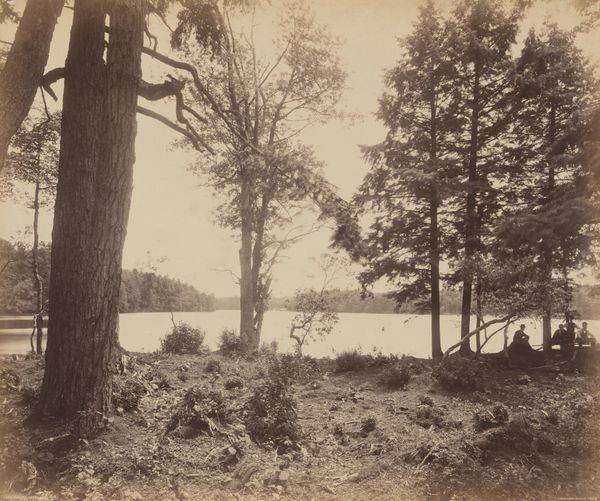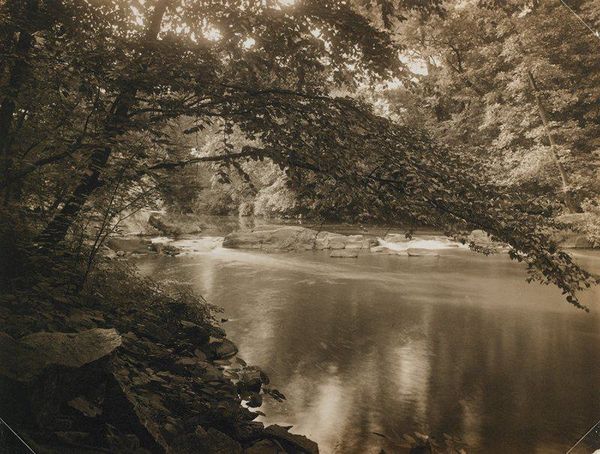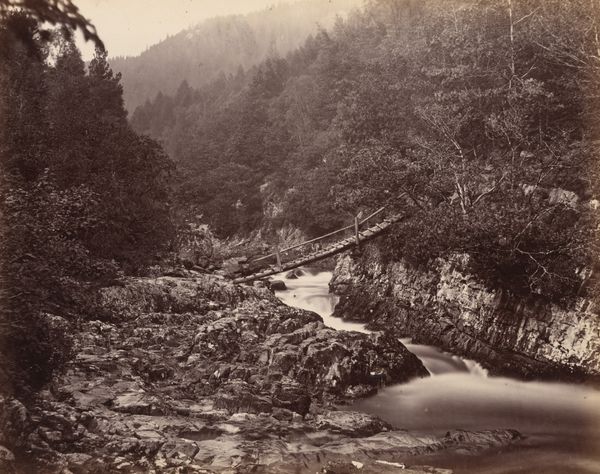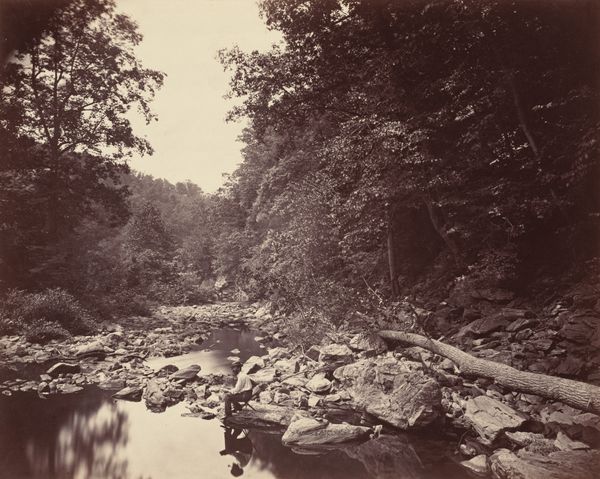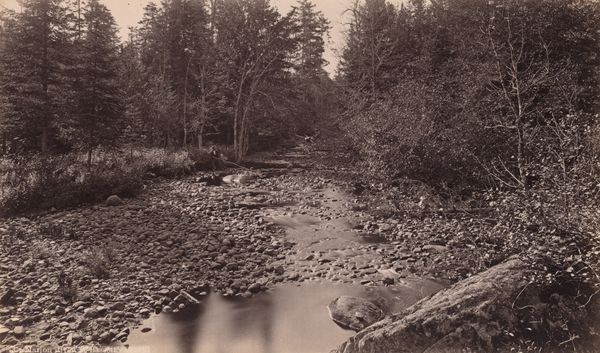
Dimensions: image: 25.1 × 40.7 cm (9 7/8 × 16 in.)
Copyright: National Gallery of Art: CC0 1.0
Seneca Ray Stoddard made this albumen print of Cascade Lake in the Adirondacks using a wet collodion process. This technique, common in the late 19th century, involved coating a glass plate with a light-sensitive emulsion right before exposure in the camera. The tonal range, from the dark, dense evergreens to the bright sky reflecting on the water, speaks to the process. To create the image, Stoddard would have had to master the chemistry and timing of coating, exposing, and developing the plate. The final print, made by placing the negative on albumen-coated paper and exposing it to sunlight, gains its sepia tone and smooth surface from the egg white in the paper. Photography at this time was not just about pointing and shooting. It demanded hands-on skill and an understanding of materials. Stoddard was capturing an image of untouched wilderness, but he was also crafting a physical object through a complex, alchemical process. This fusion of technology, artistry, and the allure of the natural world challenges us to reconsider photography as both a fine art and a craft.
Comments
No comments
Be the first to comment and join the conversation on the ultimate creative platform.
